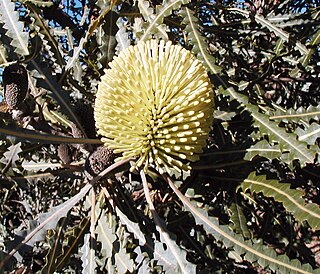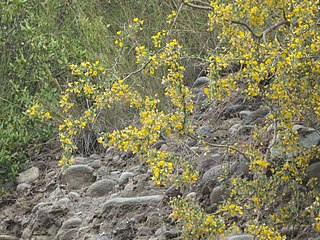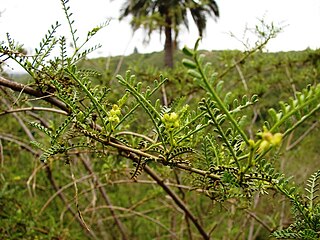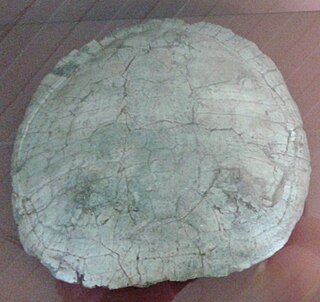
Caenorhabditis elegans is a free-living transparent nematode about 1 mm in length that lives in temperate soil environments. It is the type species of its genus. The name is a blend of the Greek caeno- (recent), rhabditis (rod-like) and Latin elegans (elegant). In 1900, Maupas initially named it Rhabditides elegans. Osche placed it in the subgenus Caenorhabditis in 1952, and in 1955, Dougherty raised Caenorhabditis to the status of genus.
Howard Robert Horvitz is an American biologist best known for his research on the nematode worm Caenorhabditis elegans, for which he was awarded the 2002 Nobel Prize in Physiology or Medicine, together with Sydney Brenner and John E. Sulston, whose "seminal discoveries concerning the genetic regulation of organ development and programmed cell death" were "important for medical research and have shed new light on the pathogenesis of many diseases".

Sir John Edward Sulston was a British biologist and academic who won the Nobel Prize in Physiology or Medicine for his work on the cell lineage and genome of the worm Caenorhabditis elegans in 2002 with his colleagues Sydney Brenner and Robert Horvitz. He was a leader in human genome research and Chair of the Institute for Science, Ethics and Innovation at the University of Manchester. Sulston was in favour of science in the public interest, such as free public access of scientific information and against the patenting of genes and the privatisation of genetic technologies.

The spermatheca, also called receptaculum seminis, is an organ of the female reproductive tract in insects, e.g. ants, bees, some molluscs, oligochaeta worms and certain other invertebrates and vertebrates. Its purpose is to receive and store sperm from the male or, in the case of hermaphrodites, the male component of the body. Spermathecae can sometimes be the site of fertilization when the oocytes are sufficiently developed.

Rosellas are in a genus that consists of six species and nineteen subspecies. These colourful parrots from Australia are in the genus Platycercus. Platycercus means "broad-tailed" or "flat-tailed", reflecting a feature common to the rosellas and other members of the broad-tailed parrot tribe. Their diet is mainly seeds and fruit.

The ring-tailed vontsira, locally still known as the ring-tailed mongoose is a euplerid in the subfamily Galidiinae, a carnivoran native to Madagascar.

Banksia elegans, commonly known as the elegant banksia, is a species of woody shrub that is endemic to a relatively small area of Western Australia. Reaching 4 m (13 ft) high, it is a suckering shrub that rarely reproduces by seed. The round to oval yellow flower spikes appear in spring and summer. Swiss botanist Carl Meissner described Banksia elegans in 1856. It is most closely related to the three species in the subgenus Isostylis.

Ctenochasma is a genus of Late Jurassic ctenochasmatid pterosaur belonging to the suborder Pterodactyloidea. Three species are currently recognized: C. roemeri, C. taqueti, and C. elegans. Their fossilized remains have been found in the Solnhofen Limestone of Bavaria, Germany, the "Purbeck Group" of northeastern Germany, and the Calcaires tâchetés of eastern France.

In molecular biology lin-4 is a microRNA (miRNA) that was identified from a study of developmental timing in the nematode Caenorhabditis elegans. It was the first to be discovered of the miRNAs, a class of non-coding RNAs involved in gene regulation. miRNAs are transcribed as ~70 nucleotide precursors and subsequently processed by the Dicer enzyme to give a 21 nucleotide product. The extents of the hairpin precursors are not generally known and are estimated based on hairpin prediction. The products are thought to have regulatory roles through complete or partial complementarity to mRNA. The lin-4 gene has been found to lie within a 4.11kb intron of a separate host gene.

The elegant water shrew is a species of mammal in the subfamily Soricinae of the family Soricidae. It is monotypic within the genus Nectogale. It lives in Sikkim and China.

Eudromia is a genus of birds in the tinamou family. This genus comprises two crested members of this South American family.

Adesmia microphylla, pahuen, is a common shrub in Coastal Chilean Matorral of Central Chile, 400 to 1000 masl., associates with Proustia pungens and Lithrea caustica. This species was merged as A. arborea, a taxon including A. confusa Ulibarri, a distinctive plant with flowers over brachyblasts. The flowers of A. microphylla appear over spines.

Adesmia is a genus of flowering plants in the legume family, Fabaceae. It was recently assigned to the informal monophyletic Adesmia clade within the Dalbergieae.

Adesmia balsamica is a rare species of flowering plant in the legume family, Fabaceae. It belongs to the sub-family Faboideae. A. balsamica is a small shrub which exudes a fragrant balsamic aroma. The species is found in portions of South America, with an example location being La Campana National Park in Chile.
Adesmia resinosa is a species of flowering plant in the legume family, Fabaceae. It belongs to the subfamily Faboideae. The species is found in portions of South America, with an example location being La Campana National Park in central Chile as an understory associate of the Chilean wine palm.

The Southern Andean steppe is a montane grasslands and shrublands ecoregion occurring along the border of Chile and Argentina in the high elevations of the southern Andes mountain range.

Bauruemys is an extinct genus of turtles in the family Podocnemididae.
Adesmia muricata is a species of flowering plant in the legume family, Fabaceae. It was originally described in 1794 as Hedysarum muricatumJacq.. It is native to Peru and Uruguay.
The Dod-13 gene in the worm Caenorhabditis elegans encoding a cytochrome p450 enzyme, which have steroid hydroxylase activity, with the CYP Symbol CYP35B1. Dod-13 is downstream gene of Daf-16 influenced the lifespan of C. elegans.














